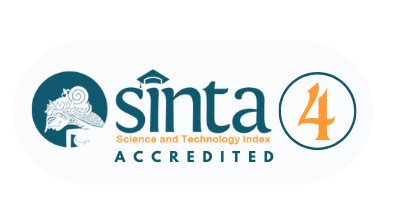A Morphological Analysis of Slang Words Used by Characters in “Ralph Breaks the Internet” Movie
DOI:
https://doi.org/10.33633/es.v4i01.4462Keywords:
morphology, Ralph Breaks the Internet, slangAbstract
Abstract: The current study entitled “A Morphological Analysis of Slang Words Used by Characters In Ralph Breaks the Internet Movie” aimed to investigate the morphological processes of constructing slang words and its meaning of the found slang words used by the movie characters. This research used a descriptive qualitative method with content analysis design. The findings revealed that there are 42 slang words categorized into different morphological processes included compound (14,28%), clipping (11,90%), blending (14,28%), affixations (16,66%), reduplicative (7,14%), backformation (2,4%), abbreviation (2,4%), conversion (4,76%), alternation (14,28%), extension (4,76%) and word manufacture (7,14%). This study demonstrated the meaning changes of the slang words that have been affected through certain morphological processes by modifying their word category. Consequently, some slang terms have preserved the original meaning despite the changes in their spelling. In the meantime, certain slang words get abbreviated or shortened and retained their original meaning. Meanwhile, some slang words change their meaning by deriving their word category. Besides, there were certain slang words that change their meaning depending on word usage.Key words: morphology, Ralph Breaks the Internet, slangAbstrak. Penelitian yang berjudul “Analisis Morfologi Kata-kata Slang yang Digunakan oleh karakter dalam Film ‘Ralph Breaks the Internet’” bertujuan untuk menelaah proses morfologi dalam membangun kata-kata slang dan maknanya yang digunakan dalam film tersebut. Penelitian ini menggunakan metode kualitatif deskriptif dengan desain analisis isi. Data temuan menunjukkan 42 kata slang yang dikategorikan ke dalam proses morfologi yang berbeda, yaitu ‘compound’ (14,28%), ‘clipping’ (11,90%), ‘blending’ (14,28%). , ‘affixations’ (16,66%), ‘reduplicative’ (7,14%), ‘backformation’ (2,4%), ‘abbreviation’ (2,4%), ‘conversion’ (4,76%), ‘alternation’ (14,28%), ‘extension’ (4,76%) dan ‘word manufacture’ (7,14%). Studi ini mendemonstrasikan perubahan makna dari kata-kata slang yang telah dipengaruhi proses morfologi tertentu dengan memodifikasi kategori kata asal. Hasilnya beberapa istilah dalam kata slang tetap mempertahankan makna aslinya meskipun ejaannya berubah. Sementara itu, kata-kata slang tertentu disingkat dan tetap mempertahankan arti aslinya. Beberapa kata slang lainnya berubah makna dengan mengubah kategori katanya. Selain itu, beberapa kata-kata slang tertentu berubah maknanya tergantung dari penggunaan kata.Kata kunci: morfologi, Ralph Breaks the Internet, slangReferences
Ackema, P & Neeleman, A. (2004). Beyond Morphology: Interface conditions on word formation. Oxford: Oxford University Press.
Allan, K. et. al. (2006). Forbidden Word. New York: Cambridge
Anney, V, N. (2014). Ensuring the Quality of the Findings of Qualitative Research: Looking at Trustworthiness Criteria. Journal of Emerging Trends in Educational Research and Policy Studies, 5(2), 272-281. Retrieved Feb 19, 2020, from https://docplayer.net/52099744-Ensuring-the-quality-of-the-findings-of-qualitative-research-looking-at-trustworthiness-criteria-author-vicent-naano-anney-1.html
Archibald, J., & O’Grady, W. (2016). Contemporary linguistic analysis: An introduction (8th ed). Toronto: Pearson.
Arikunto, S. (2017). Pengembangan Instrumen Penelitian dan Penilaian Program. Yogyakarta: Pustaka Pelajar.
Ary, D. Et al. (2010). Introduction to Research in Education (8th ed). Canada: Nelson Education
Ayto, J. (1998). The Oxford Dictionary of Slang. New York, USA: Oxford University Press
Booij,G (2007). The grammar of words: an introduction to morphology (2nd ed). New York, USA: Oxford University Press
Coleman, J. (2012) The life of slang. New York, USA: Oxford University Press Inc
Creswell, John W. (2012). Educational Research. Boston: Pearson Education Inc
Dalzell, T. (2018). The Routledge dictionary of modern English slang and unconventional English (2nd ed). New York: Routledge
Fathonah, E,L ( 2018) word formation and meaning of slang words on “meme” picture of group “shitpostbot 5000” on social media “facebook”. Surabaya: University of Sunan Ample. http://digilib.uinsby.ac.id/id/eprint/25565
Green, J. (2005) The Vulgar Tongue: Green’s History of Slang. New York, USA: Oxford University Press Inc
Heigham, J., & Croker, R. A. (2009). Qualitative Research in Applied Linguistics A Practical Introduction. UK: Palgrave Micmillan.
Holmes, J. (2013). An Introduction to Sociolinguistics (4th ed). New York, USA: Routledge
Hotten, J,C. (1913 ) The Slang Dictionary: Etymological Historical and anecdotal. London, England: Chatto & Windus
Hudson, R,A. (1996). Sociolinguistics (2nd ed). NewYork, USA: Cambridge University Press.
Jamet, D. (2009). A morphological approach to an English clipping. Lexis: Journal in English lexicology. https://doi.org/10.4000/lexis.884
Kehr, D (2020) Animation: Britannica Inc. Retrieved June 20, 2020, from https://www.britannica.com/art/animation
Kolowich, L. (2019). The Evolution of Language: How Internet Slang Changes the Way We Speak. Retrieved December 2, 2019, from https://blog.hubspot.com/ marketing/how-internet-changes-language
Kopp, J (n.d.). 5 Reasons slang language is important for language learning. Retrieved December 2, 2019, from https://www.omniglot.com/language/articles/whyslangisimportant.htm
Mahnunik, S,N. (2015) An Analysis of Slang Language in Song Lyrics Used by Justin Bieber. Surabaya: University of Sunan Ampel. http://digilib.uinsby.ac.id/3715/
Mattiello,E.(2008). An Introduction to English Slang. Milano, Italy: Polimetrica.
Miles, M. B., & Huberman, A. M. (1994). Qualitative data analysis: An expanded sourcebook (2nd ed). London: Sage
Munro, M. (2017) Chambers pardon my English!: an exploration of slang and informal language. Hopetoun Crescent, Edinburgh: Chambers Harap Publishers Ltd.
O’Conner, P,T. & Kellerman, S. (2019, December 01). You're darn tootin'! Retrieved June 15, 2020, from https://www.grammarphobia.com/blog/2019/12/darn-tootin.html
O’Grady, W, et al. (1996). Contemporary Linguistics: An Introduction (3rd ed). New York, USA: St. Martin Press.
Panjaitan, Tuti Alawiyah. (2017). An Analysis of Slang Language in Zootopia Movie. Malang: Maulana Malik Ibrahim University. http://etheses.uin-malang.ac.id/14154/
Plag, I. (2002). Word formation in English. Cambridge University Press
Thorne, T. (2007). Dictionary of contemporary slang (3rd ed). London: A & C Black Publisher Ltd
Wardhaugh, R. (2006). An introduction of sociolinguistics (5th ed). UK: Blackwell Publishing Ltd
Yule, G. (2010). The Study of Language (4th ed). Cambridge: Cambridge University Press.
https://dictionary.cambridge.org/
https://www.lexico.com/
https://www.merriam-webster.com/
https://www.urbandictionary.com/






















